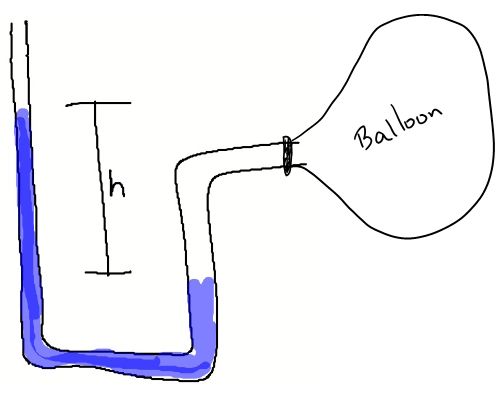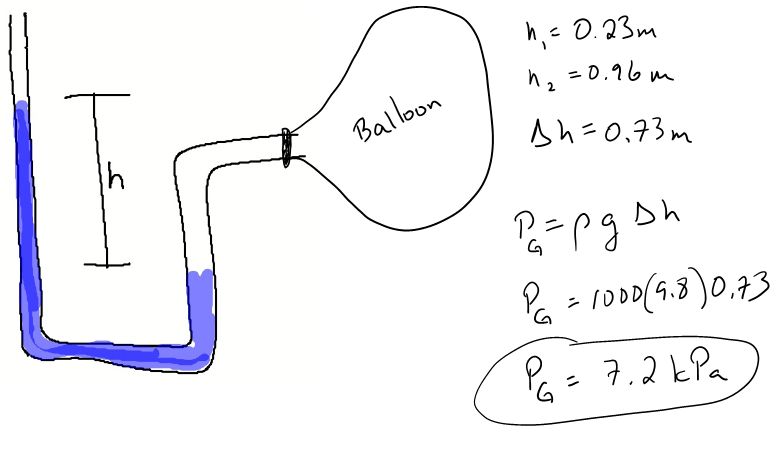Pressure
Pressure and force are related, as you would expect, but they are not the same thing. A small pressure can cause large force, and a small force can cause a large pressure.
A pressure is a force spread out over an area.

The official unit for pressure is the Pascal (Pa), where

Pressure Force Area
In the image below, the weight of the dancer is spread out over a larger area when she stands flat-footed. On her tippy toes, her entire weight is concentrated on a small area, and the floor is subjected to a larger pressure, but the same force.
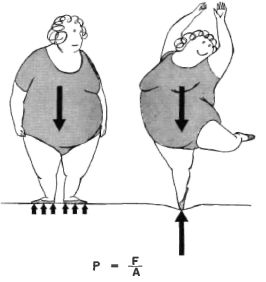
In the classic demonstration below, the professor is not hurt by the bed of nails because his weight is spread out over a large number of nails. Each nail tip has a small area, but the combined area is enough to reduce the pressure at each to a tolerable value.
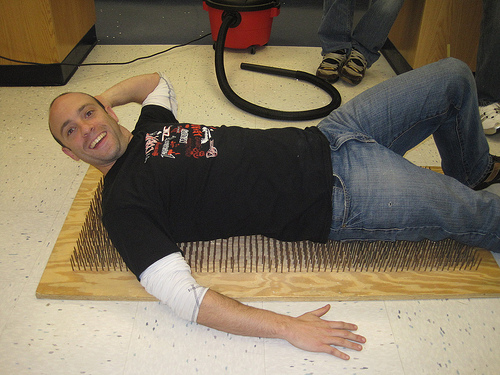
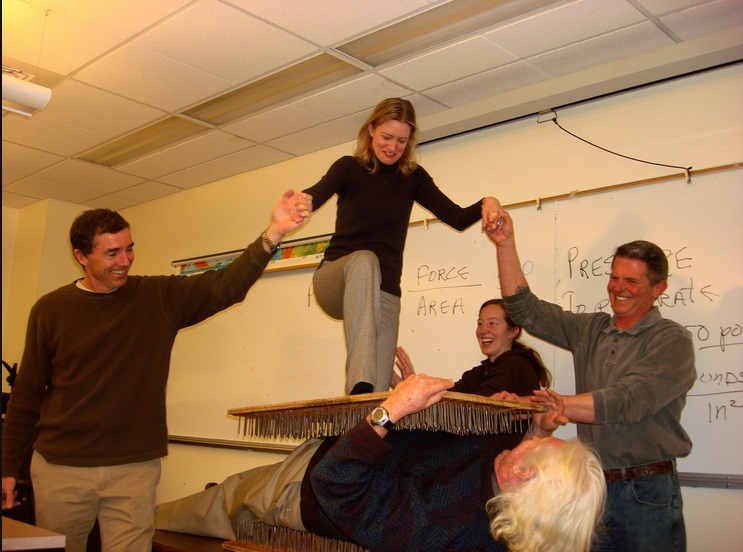
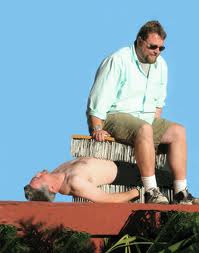
Example 1 - Stiletto Circus
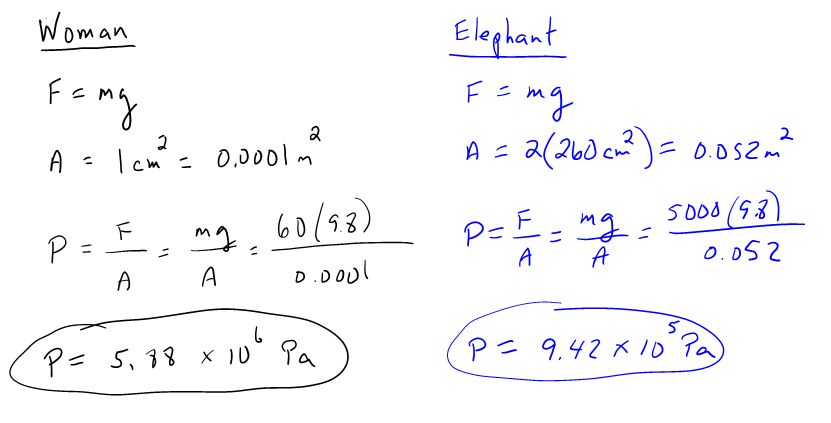
Atmospheric and Gauge Pressure
We live at the bottom of an ocean of air. The weight of this air pushes down with enormous pressure. At sea level, we call this standard atmospheric pressure.

There are a number of other units in which pressure is measured. The conversions, given below, are all related to standard atmospheric pressure.


When we measure the pressure in a fluid (liquid or gas) with a pressure gauge, the instrument will either give you absolute pressure or gauge pressure.
Absolute Pressure is a pressure measurement that includes atmospheric pressure. Absolute pressure will never be a negative value.
Gauge Pressure is the pressure above absolute pressure.
Absolute Pressure = Gauge Pressure + Standard Atmospheric Pressure
Liquid Pressure via Density
The pressure of a liquid (unlike a gas) can be considered constant with depth (i.e. the density of water at the bottom of a lake is the same value as at the top).
This allows us to define the pressure in a column of liquid using density. We will use the Greek letter rho, ρ, to signify density.
P = ρgh
Example 2 - New Moon Door
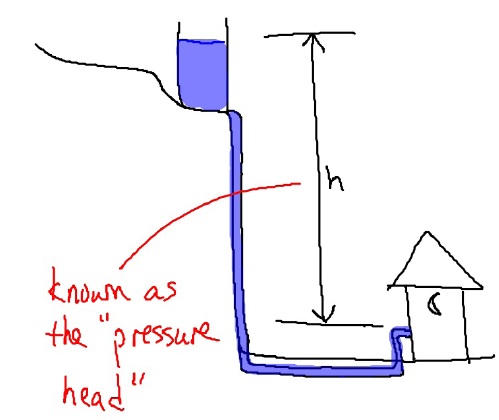
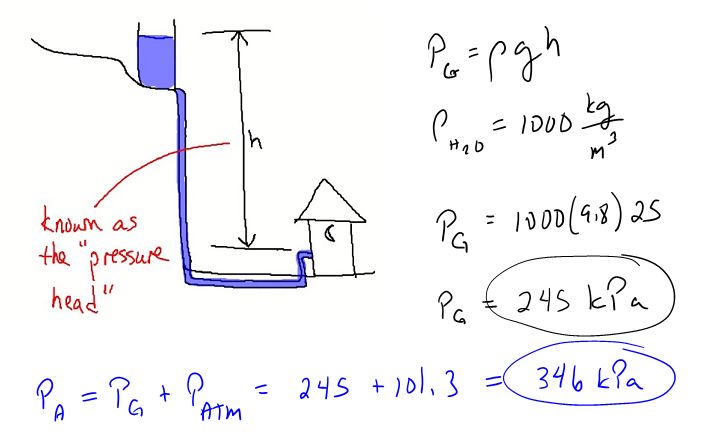
The Monometer
The manometer is a device that measures the gauge pressure between two points. It is a simple device made of U-shaped tube filled with a liquid (usuall water, sometimes mercury) that has both ends open the the atmosphere. A gas pressure is applied to one end, and the liquid rises up on the other. The gauge pressure can be found using
PG = ρgΔh
where Δh is the difference in heights of the liquid level on either side of the tube.
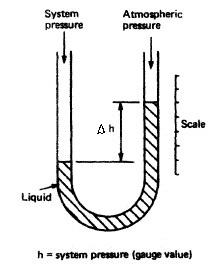
Example 3 - Not the Hindenburg
